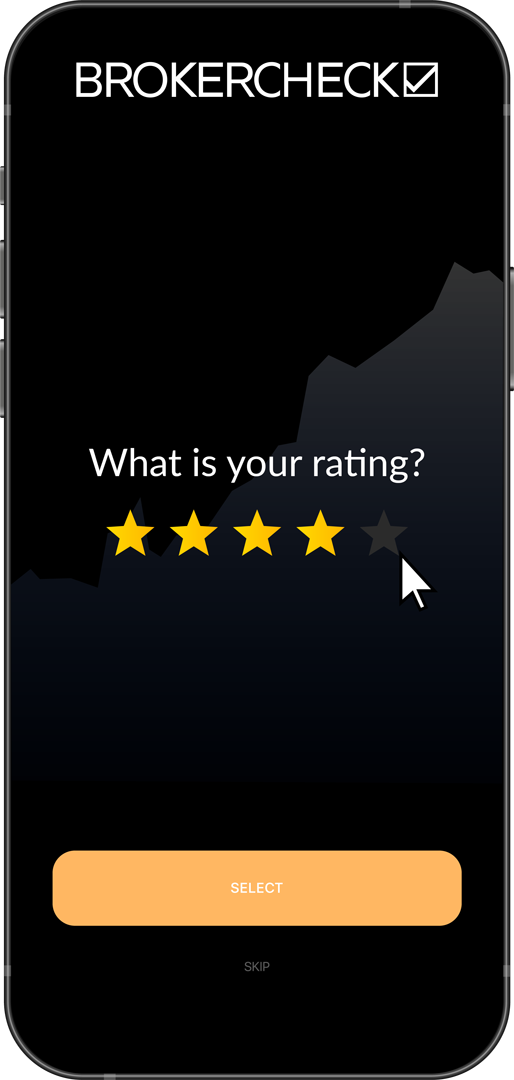1. What is Knoxville Divergence?
Knoxville Divergence is a technical analysis indicator used by traders to identify potential reversals in the market. It was developed by trader Rob Booker and is characterized by the simultaneous occurrence of a momentum indicator such as the Relative Strength Index (RSI) or Stochastic making new highs or lows, while the price does not confirm these highs or lows. This divergence can signal that the current trend is weakening and may be about to change direction.
The indicator itself consists of two components: a momentum line and a divergence line. The momentum line is a standard RSI or Stochastic oscillator, while the divergence line is plotted as either a series of dots or a line on the price chart. A Knoxville Divergence occurs when the price is making new highs or lows, but the momentum line is failing to make new highs or lows, indicating a lack of conviction behind the price movement.
Traders typically look for Knoxville Divergence in conjunction with other signals to confirm a potential trend reversal. When the divergence appears, it is often considered a bearish signal if it occurs during an uptrend (indicating a potential downward reversal) and a bullish signal during a downtrend (indicating a potential upward reversal). It is important to note that Knoxville Divergence can be used on various time frames and can be applied to any market, including forex, stocks, and commodities.

2. How to Identify Knoxville Divergence?
Identifying Knoxville Divergence
To spot Knoxville Divergence, traders must scrutinize price charts and momentum indicators simultaneously. The first step is to observe the price making a new high or low. Concurrently, the momentum line derived from an RSI or Stochastic oscillator should be evaluated to see if it fails to confirm the new price peak or trough. This discrepancy signals a divergence.
For a more systematic approach, the trader can mark the points where the price reaches its extreme (either high or low) and compare these points to the corresponding peaks or troughs on the momentum line. Confirmation of divergence occurs when the price records a higher high or lower low, but the momentum line does not mirror this action, instead showing a flattening or opposite direction movement.
| Price Action | Momentum Line | Type of Divergence |
|---|---|---|
| New High | Lower High or Flat | Bearish |
| New Low | Higher Low or Flat | Bullish |
Visual aids such as divergence lines or dots can be overlaid on the price chart to help identify these moments more clearly. Traders must wait for the divergence to fully form before considering it in their trading decisions. Premature action can lead to misinterpreting market signals.
Additionally, traders should look for volume data as a complementary indicator. Divergences that are accompanied by declining volume may reinforce the likelihood of a potential trend reversal. However, divergence signals should not be used in isolation; they are most effective when combined with other technical analysis tools and indicators to validate potential trades.
2.1. Recognizing Momentum Shifts
Recognizing Momentum Shifts
Momentum shifts are pivotal in trading, as they can indicate the strength of the current trend and signal potential reversals. To accurately recognize these shifts, traders must closely monitor the rate of price change. This is often done by using momentum indicators such as the Relative Strength Index (RSI), the Moving Average Convergence Divergence (MACD), or the Stochastic Oscillator.
Price velocity and acceleration are key concepts here; a slowing down of the price movement or a change in direction can be early signs of a momentum shift. When the price makes a sharp move in either direction, it’s essential to observe the momentum indicators for any signs that the move is losing strength. A divergence between price and momentum is a clear signal of a momentum shift.
Traders should also pay attention to candlestick patterns and support and resistance levels. For instance, a series of waning bullish candlesticks at a resistance level, accompanied by a weakening momentum indicator, could suggest a bearish momentum shift. Conversely, strong bullish candlesticks breaking through a resistance level with increasing momentum can signal a continuation of the uptrend.
| Indicator | Observation | Possible Interpretation |
|---|---|---|
| RSI | Above 70 or below 30 | Overbought or oversold conditions |
| MACD | Line crossover | Change in trend momentum |
| Stochastic | %K and %D line crossover | Potential reversal points |
 Incorporating multiple time frame analysis can further enhance the recognition of momentum shifts. A divergence on a longer time frame carries more weight and can be a more reliable signal of a major trend change. Traders should align signals from shorter time frames with the larger trend observed in longer time frames to increase the probability of successful trades.
Incorporating multiple time frame analysis can further enhance the recognition of momentum shifts. A divergence on a longer time frame carries more weight and can be a more reliable signal of a major trend change. Traders should align signals from shorter time frames with the larger trend observed in longer time frames to increase the probability of successful trades.
2.2. Analyzing Price and Indicator Discrepancies
Discrepancies Between Price Action and Technical Indicators
Discrepancies between price action and technical indicators often manifest as divergences, where price moves in one direction while an indicator moves in the opposite. This can be a powerful signal that the current price trend is weakening and may soon reverse. For instance, if a stock’s price is steadily climbing to new highs but the RSI starts to decline, this bearish divergence could indicate that buying pressure is waning and a downturn is imminent.
Another key discrepancy to monitor is when price reaches new highs or lows without confirmation from volume-based indicators like the On-Balance Volume (OBV). Such a scenario might suggest that the price movement lacks the support of trader commitment, casting doubt on the trend’s sustainability.
| Price Action | Indicator Trend | Discrepancy Type | Implication |
|---|---|---|---|
| Higher Highs | Lower Highs (RSI) | Bearish Divergence | Possible trend reversal |
| Lower Lows | Higher Lows (RSI) | Bullish Divergence | Potential uptrend start |
| Advance with Low Volume | Declining OBV | Volume Discrepancy | Questionable advance |
Candlestick patterns in conjunction with indicator discrepancies can also provide nuanced insights. For example, a doji or a shooting star candlestick at a resistance level, coupled with a bearish divergence in the MACD, can offer a strong case for a potential reversal.
Traders should scrutinize discrepancies not as definitive signals but as alerts to pay closer attention and prepare for potential shifts in market sentiment. Coupling these observations with other technical tools and price action analysis refines their effectiveness and can lead to more informed trading decisions.
3. How to Integrate Knoxville Divergence into Trading Strategies?
Integrating Knoxville Divergence into Trading Strategies
Knoxville Divergence, developed by Rob Booker, is a technical indicator that identifies potential reversals in the market. It is unique because it combines both price momentum and volume, providing a more comprehensive view than traditional divergence indicators. Traders can integrate Knoxville Divergence into their strategies by looking for the classic signs of divergence between price and the indicator itself.
When the Knoxville Divergence indicator shows a peak while the price continues to reach higher highs, it suggests a bearish divergence. Conversely, when the indicator forms a trough and the price charts lower lows, a bullish divergence is indicated. These divergences can signal a weakening trend and the possibility of a reversal.
Confirmation with additional technical tools is crucial for enhancing the reliability of Knoxville Divergence signals. For example, traders might look for confirmation from candlestick patterns, such as a bearish engulfing or a bullish hammer, at the point where divergence is detected. Additionally, checking against other momentum indicators like the RSI or MACD can provide further validation.
| Knoxville Divergence | Confirmatory Signal | Action Suggested |
|---|---|---|
| Bearish | Bearish Candlestick | Consider shorting |
| Bullish | Bullish Candlestick | Consider going long |
Risk management should always accompany the use of Knoxville Divergence. Setting stop-loss orders at recent swing highs or lows can help protect trades from unexpected market movements. Traders should also pay attention to the overall market context and not rely solely on the divergence indicator, as no tool can predict market movements with absolute certainty.
Incorporating Knoxville Divergence into a trading strategy involves a combination of signal detection, confirmation, and prudent risk management. By using this indicator in tandem with other technical analysis tools, traders can strive to make more informed decisions in the pursuit of profitable trading opportunities.
3.1. Combining with Support and Resistance Levels
Enhancing Knoxville Divergence with Support and Resistance
Support and resistance levels are pivotal in reinforcing the signals provided by Knoxville Divergence. When a divergence aligns with a key support or resistance level, it often signifies a stronger potential for a price reversal. Traders can leverage this confluence by looking for Knoxville Divergence signals that coincide with these critical price levels.
For instance, a bullish Knoxville Divergence occurring at a significant support level may indicate a robust opportunity to go long. Conversely, a bearish divergence at a resistance level can be a powerful prompt to consider short positions. These levels act as barriers to price movements, and their breach or respect can enhance the conviction in a trade setup.
Integrating horizontal lines representing historical support and resistance with Knoxville Divergence can visually pinpoint these high-probability areas. Additionally, using trend lines to connect swing highs or lows provides a dynamic view of changing support and resistance levels that can align with divergence signals.
By combining these technical elements, traders can filter out less promising signals and focus on those with higher chances of success. Here’s a simplified representation of how support and resistance levels can complement Knoxville Divergence signals:
| Knoxville Divergence | Support/Resistance Level | Combined Signal Strength |
|---|---|---|
| Bullish | At significant support | Strong |
| Bearish | At significant resistance | Strong |
| Bullish | No clear support | Weak |
| Bearish | No clear resistance | Weak |
The intersection of Knoxville Divergence with support and resistance levels is not just about identifying entry points. Traders should also consider these levels when determining exit strategies, such as setting take-profit orders or adjusting stop-loss levels to lock in profits or minimize losses.
3.2. Incorporating Volume and Other Indicators
Volume as a Confirmatory Tool
Incorporating volume into the analysis alongside Knoxville Divergence and support/resistance levels adds a robust dimension to trading signals. Volume, which represents the total amount of trading activity or contracts traded within a given time frame, serves as a confirmatory tool for the strength of a price movement. A divergence signal at a key support or resistance level with concurrent high volume can indicate a stronger conviction among traders, suggesting a more reliable trade opportunity.
Synergy with Other Indicators
While volume acts as a primary indicator for validating the strength of a market move, traders often benefit from using additional indicators to enhance the predictive power of their trading strategy. For instance, the Relative Strength Index (RSI) or Moving Average Convergence Divergence (MACD) can be used to confirm or refute the signals provided by Knoxville Divergence. When multiple indicators converge on a single point of analysis, the probability of a successful trade increases.
| Indicator | Purpose | Signal Confirmation |
|---|---|---|
| Volume | Confirm strength of movement | High volume at key levels indicates stronger signal |
| RSI | Gauge overbought/oversold conditions | Alignment with divergence suggests trend reversal |
| MACD | Identify trend changes and momentum | Convergence with divergence affirms signal strength |
Traders should note that no single indicator should be used in isolation. The integration of volume and other technical indicators with Knoxville Divergence and support/resistance levels creates a composite view of the market, allowing for more nuanced and informed trading decisions. This multi-faceted approach mitigates risk and capitalizes on the confirmation of trends provided by the collective behavior of various indicators.
4. What Are the Limitations and Considerations of Knoxville Divergence?
Limitations of Knoxville Divergence
Knoxville Divergence, like any technical indicator, is not infallible and comes with its own set of limitations. False signals are a primary concern, as the indicator may signal a reversal that does not materialize. This is often due to market noise or short-term price fluctuations that do not affect the underlying trend.
Another limitation is the lagging nature of Knoxville Divergence. Since it is derived from historical data, the signals it generates are inherently behind real-time price action. This lag can result in missed opportunities or late entries, potentially diminishing the profitability of trades.
Traders must also consider the market context in which Knoxville Divergence is applied. The indicator’s effectiveness can vary across different market conditions, such as trending versus ranging markets. In strong trending markets, for example, divergence signals may be less reliable and can lead to premature trades against the prevailing trend.
| Consideration | Description |
|---|---|
| Market Volatility | High volatility can lead to more false signals. |
| Asset Specificity | Some assets may not respond well to divergence indicators. |
| Time Frame | Signals may vary in strength and reliability across time frames. |
Incorporating other technical indicators and analysis techniques is crucial to counteract these limitations. By using tools like moving averages, trend lines, and volume analysis, traders can validate Knoxville Divergence signals and enhance their decision-making process. It’s essential to apply a risk management strategy to protect against the inherent uncertainties that come with any technical indicator.
4.1. Understanding False Signals
False Signals in Divergence Trading
False signals in divergence trading, often referred to as whipsaws, can lead traders into making misguided decisions. These occur when the indicator suggests a reversal that does not materialize, or the price briefly reverses before resuming its prior trend. Understanding the nature of false signals is imperative to improve the accuracy of trade entries and exits.
The identification of a false signal typically involves an analysis of the divergence relative to the prevailing market conditions. For instance, during periods of high market volatility, price swings can be erratic and less predictable, increasing the likelihood of a divergence signal not being followed by a sustained reversal. Traders should be vigilant of the broader market context when evaluating divergence signals to mitigate the risks of false positives.
Incorporating volume analysis can be particularly insightful when assessing the validity of a divergence signal. A divergence accompanied by significant changes in volume may suggest a stronger likelihood of a genuine reversal. Conversely, if volume levels do not support the divergence, the signal may be less reliable.
| Indicator | Role in False Signal Identification |
|---|---|
| Volume | Confirms the strength of the signal |
| Moving Averages | Provides trend context |
| Trend Lines | Helps identify potential reversals |
By cross-referencing divergence signals with these additional indicators, traders can filter out many false signals. It is also beneficial to consider the historical performance of divergence signals on the specific asset being traded. Some assets may exhibit a pattern of false signals, which could inform a trader’s approach to using divergence in their strategy.
It is crucial for traders to recognize that no indicator is foolproof. A robust risk management strategy should be in place to ensure that the impact of false signals on a trading portfolio is minimized. Setting appropriate stop-loss orders and not over-leveraging positions are fundamental practices in safeguarding against the inevitable occurrence of false signals.
4.2. Managing Risk and Setting Stop Losses
Managing Risk and Setting Stop Losses
In the context of trading, stop-loss orders are a critical component of risk management. They are designed to limit an investor’s loss on a position in a security. By setting a stop-loss order at a certain price level, a trader ensures that their losses will not exceed a predetermined amount if the market moves against them.
Position sizing is another crucial aspect of managing risk. It involves determining how much of your total capital to allocate to a particular trade. A common approach is to risk only a small percentage of your total portfolio on any single trade, often suggested to be around 1-2%. This strategy helps to prevent significant losses and preserve capital over the long term.
Traders should also consider the volatility of the asset they are trading when setting stop losses. Assets with higher volatility might require a wider stop-loss to avoid being prematurely stopped out of a position due to normal price fluctuations. Conversely, assets with lower volatility might allow for a tighter stop-loss.
It’s important to periodically review and adjust stop-loss orders. Market conditions change, and a stop-loss set at the time of entering a trade might not be appropriate after certain market events or as a trade becomes profitable. Traders often move their stop-loss orders to a break-even point or use trailing stops to lock in profits while still allowing for the possibility of further gains.
| Risk Management Tool | Purpose |
|---|---|
| Stop-Loss Order | Limits potential losses to a predetermined amount |
| Position Sizing | Controls the percentage of capital risked per trade |
| Volatility Assessment | Adjusts stop-loss parameters to market conditions |
| Stop-Loss Adjustment | Protects profits and adapts to changing market states |
By diligently applying these risk management techniques, traders can protect their capital and remain in the game for the long haul.










